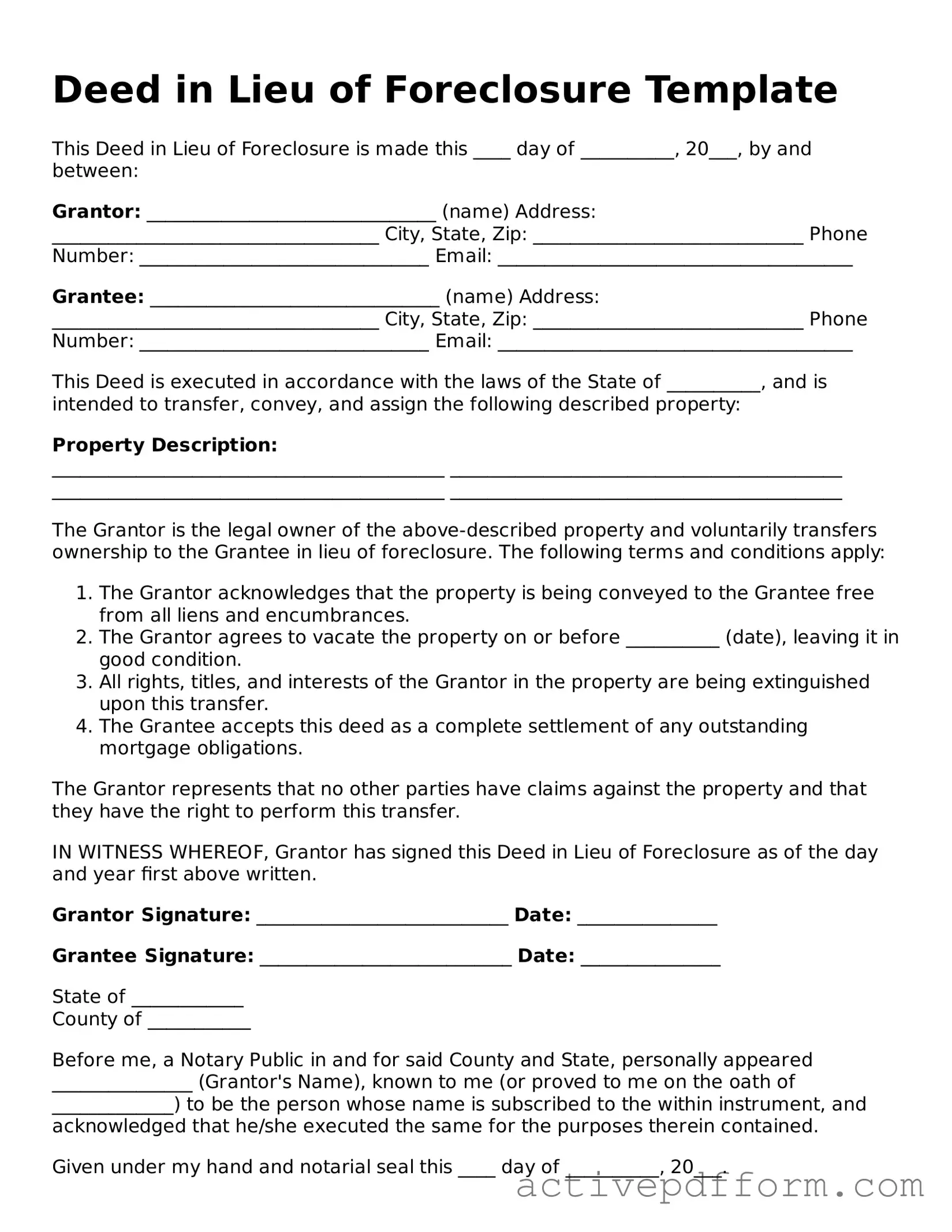What is a Deed in Lieu of Foreclosure?
A Deed in Lieu of Foreclosure is a legal agreement where a homeowner voluntarily transfers ownership of their property to the lender to avoid foreclosure. This process can help the homeowner escape the lengthy and stressful foreclosure process while allowing the lender to take possession of the property more quickly.
How does a Deed in Lieu of Foreclosure work?
In this arrangement, the homeowner signs a deed that transfers the property to the lender. In return, the lender typically agrees to cancel the mortgage debt, relieving the homeowner of their financial obligation. Both parties must agree to the terms, and it’s important to ensure that the property is free of other liens to proceed smoothly.
What are the benefits of a Deed in Lieu of Foreclosure?
One major benefit is the potential for a quicker resolution compared to foreclosure. Homeowners can avoid the negative impact on their credit score that comes with foreclosure. Additionally, it may provide an opportunity for the homeowner to negotiate relocation assistance from the lender.
Are there any drawbacks to a Deed in Lieu of Foreclosure?
Yes, there are potential drawbacks. While it may help avoid foreclosure, it can still affect your credit score, though typically less severely. Furthermore, not all lenders accept a Deed in Lieu, and homeowners may need to demonstrate financial hardship to qualify.
Who is eligible for a Deed in Lieu of Foreclosure?
Eligibility varies by lender, but generally, homeowners facing financial difficulties and unable to keep up with mortgage payments may qualify. It's essential to communicate openly with the lender about your situation and explore this option if you are struggling.
What should I do before considering a Deed in Lieu of Foreclosure?
Homeowners should gather all relevant financial documents and consult with a housing counselor or attorney. Understanding your rights and options is crucial. Additionally, it’s wise to contact your lender to discuss your situation and express interest in a Deed in Lieu.
Can I still live in my home during the Deed in Lieu process?
Typically, once the Deed in Lieu is executed, the homeowner must vacate the property. However, some lenders may allow a short period for the homeowner to remain in the home, often referred to as a "cash for keys" agreement. This varies by lender, so it’s essential to discuss this aspect upfront.
How does a Deed in Lieu of Foreclosure affect my credit score?
A Deed in Lieu of Foreclosure can impact your credit score, but generally less severely than a foreclosure. It may be reported as a settled account, which is more favorable than a foreclosure. However, the exact impact depends on your credit history and the reporting practices of your lender.
What is the process for completing a Deed in Lieu of Foreclosure?
The process usually involves several steps: first, the homeowner contacts the lender to express interest. Next, the lender will evaluate the homeowner's financial situation. If approved, both parties will sign the necessary documents, and the homeowner will transfer the property title to the lender. Finally, the lender will cancel the mortgage debt.
